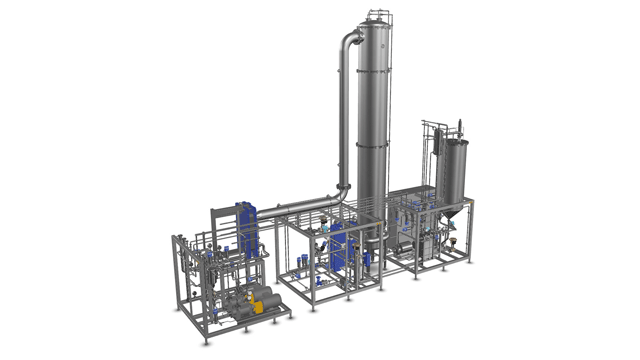Nine tips to design a fermenting cellar for brewery
Planning to expand a brewery fermentation cellar or design a new one? Be sure to take a holistic approach to ensure a modern, efficient, sustainable, and maintenance-friendly installation.
DATE 2023-11-28Here are nine tips to keep in mind for a brewery fermentation cellar that will cut energy and water costs, is easy to extend when capacity increases, and will give you some peace of mind.
- Optimize the space usage of your fermenting cellar
Position process equipment to make installation and service easy. Consider pipe routes and distances to minimize cleaning costs, extract losses and overall utility usage. Think about future extensions and the most cost-effective way to add new tanks and pipelines.
- Group the fermentation tanks
Save time and money by reducing the length of the pipe routes and equipment used. This helps optimize your production schedule and shorten the required cleaning time.
- Build process flexibility into your fermentation tank layout
The larger the scale of tank grouping and distribution clusters, the greater the flexibility of the fermenting cellar.
- Plan unobstructed piping routes to reach nearly every destination
Be sure to leave adequate space for future pipes, walkways, maintenance areas, electrical hardware and wiring, and so on. Design to allow for thermal expansion during hot cleaning and prevent equipment and pipework damage with pipe expansion loops or U-bends.
- Choose slab-mounted tanks over leg-mounted tanks
Reduce complexity by allowing one crew to focus on tank construction and glycol piping above the concrete slab and another crew to focus on installation work below the slab. This speeds installation and improves site safety.
- Design state-of-the-art valve clusters
- Product routing. Consider using a tank outlet pipe separate from the tank itself and a loop. This provides complete process flexibility, reduces extract losses, improves Cleaning-in-Place (CIP) and boosts product quality. Or use vertical valve clusters with a straight pipe connecting the tank to the drainage point and CIP return. Yet another option is using a valve cluster with a combined loop, where the CIP return pipe doubles as the product pipe for a second tank for improved cleanability, reduced water use and less product loss.
- For CIP and gas routing, choose between vertical for a compact, lightweight, low-maintenance installation or horizontal valve clusters with double-seat mix proof valves.
- Weld a sampling valve directly on your sampling line
Manual sampling? Or automated sampling? For the optimal balance between cost and the level of automation, weld a sampling valve directly on the sampling line. By using a butterfly valve, the sampling line and valve are cleaned simultaneously as the tank during CIP and therefore does not require the operator to manually connect the sampling valve manually for CIP; a time-saving advantage that ensures process hygiene and product safety.
- Automate density control in your fermentation tanks
Increase the efficiency of your fermentation cellar with automated density control.
Cost-effective automation of density control using vibration sensors in fermentation tanks reduces manual tasks and the risk of human error and improves product consistency and quality.
- Use fermentation cellar construction sets
Pre-engineered piping and instrumentation diagrams simplify the design process while ensuring operational safety, production flexibility, high hygienic standards and product quality.


